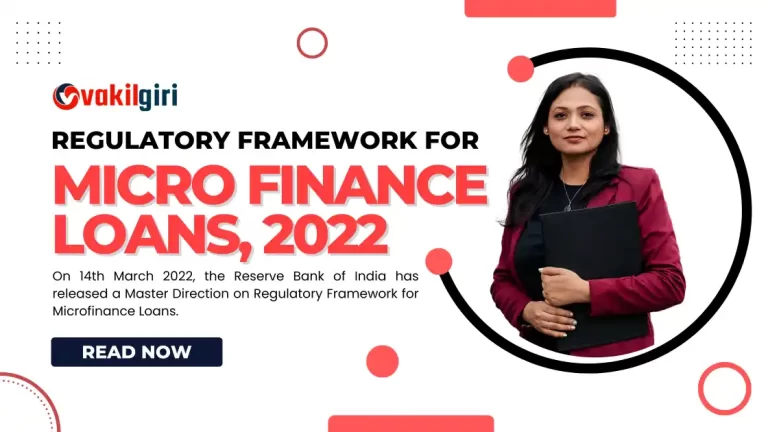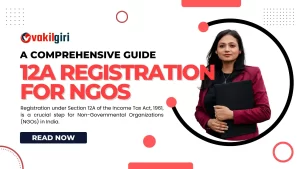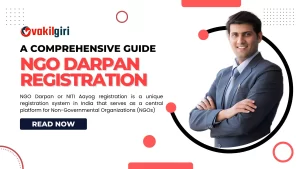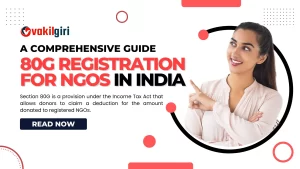Regulatory Framework for Microfinance Loans
The Year 2022 has come up with lots of surprises and new amendments released by the Government Of India and RBI. On 14th March 2022, the Reserve Bank of India has released a Master Direction on Regulatory Framework for Microfinance Loans that will be in effect from 1st April 2022.
These new Regulatory Framework Directions are to be taken as suggestions for the proper working of Microfinance Companies and it is not presented as an ACT. However, it is advised to all the Microfinance Companies providing microfinance loans to work according to the guidelines released by the RBI as these directions can be integrated in the upcoming ACT that might be released.
In this article we will be decoding all the provisions that was presented in the Master Direction – Reserve Bank of India (Regulatory Framework for Microfinance Loans) Directions, 2022.
Definition of Microfinance Loan:
A Microfinance Loan is defined as a loan that is collateral-free in nature that is provided to a household whose annual household income of upto INR 3,00,000. The term “HOUSEHOLD” is defined as an individual family unit consisting of husband, wife and their unmarried children.
Assessment of Household Income:
To assess the household income of the borrower asking for a microfinance loan; the RBI has released an indicative methodology that is discussed below:
The income assessment of a low-income household is to be calculated as the parameters provided below. These parameters are to be used by the lenders to capture complete details and analyse the information correctly.
PARAMETER- 1 : Household Profile
In this, the following information needs to be available for the household asking for microfinance loan.
a) Composition of the household
i. Total number of members (earning)
ii. Total number of members (non-earning)
b) Type of accommodation (owned/ rented, etc.)
c) Availability of basic utilities and amenities like electricity, water, toilet, sewage, LPG or Gas connection, etc.
d) Availability of assets like land, livestock, vehicle, furniture, smartphone, electronic items, etc.
PARAMETER- 2 : Household Income
a) Primary source of income
i. Working Sector for ex., Agriculture & allied activities, trading, manufacturing, services, etc.
ii. Nature of work i.e., self-employed or salaried, regular or seasonal work, etc.)
iii. Frequency of income i.e., daily, weekly, or monthly
iv. Total months or days of employment over last one year
v. Self-reported monthly income
vi. Average monthly income
b) Other sources of income
i. Remittance
ii. Rent/ Lease
iii. Pension
iv. Government transfer
v. Scholarship
vi. Others (if applicable, specify details)
c) The above mentioned income assessment must be calculated for all the earning members of the household with respect to all primary as well as secondary sources of income. The double counting of income must not be done and needs to be assessed carefully.
d) The income calculation can be done on a monthly basis and must be assessed for a minimum period of one year inorder to ensure the stability of the household income.
PARAMETER- 3 : Household Expenses
a) Regular monthly expenses must be calculated like expenses for food, basic utilities, transportation cost, rent of house or shop (if any), clothing, regular medical costs, children’s education fees for school or college, etc.
b) For a period of last 1 year, the irregular expenses must also be calculated like for medical expenses, house renovation cost, any purchase of household goods or functions, etc.
The guidelines also suggested that while assessing the household income, it must be verified from other sources like bank statement records, member groups, or any other reference in the borrowers’ vicinity.
* The Microfinance Company can adopt or modify the above discussed framework released by the Reserve Bank of India after approval from their respective board members and as per their requirements.
* The information gathered related to the household income by the Regulatory Authorities must be submitted to the Credit Information Companies referred to as CICs.
Limit on Loan Repayment:
A Microfinance Company must have a board-approved policy associated with the limit on repayment of monthly loan obligations of a household that is a maximum of 50% of the monthly household income.
*This calculation must be considered taking all outstanding loans that are currently existing or are under process.
Incase the total existing loan repayment for a household per month is 50% above the monthly household income, then it must be allowed to mature and in such cases, no new loan must be disbursed until the prescribed limit of 50% is complied with.
Pricing of Loans & Loan Plans for Microfinance Company
A Microfinance Company must have a board-approved policy regarding the pricing of microfinance loans that will be presented to the borrowers. The interest rate model for the loan plan must be well-documented. It must clearly mention all the components of the interest rate such as, cost of funds, risk premium & margin, etc.
It is important to note that the Interest rates and other charges or fees must not be usurious and must follow the guidelines released by the Reserve Bank of India. These information must be disclosed to the borrower prior to the disbursement of loan amount.
The document containing required details of the microfinance loan can be formatted in a standardised and simplified factsheet that was released with the notification and is mentioned below.
POINTS TO REMEMBER:
– The interest rate, fees, or charges associated with the microfinance loan must be explicitly disclosed in the factsheet to the borrower. Extra charges or hidden fees that were not disclosed in the factsheet shall not be charged from the borrower.
– No Pre-payment penalty shall be charges on microfinance loans.
– Penalty incase of delayed payment of the instalments shall be charged from the borrower.
– The Penalty shall be applied on the overdue amount and not the total loan amount.
– The Microfinance Company are required to display the minimum, maximum and average interest rates that are charged on the microfinance loans at all the offices, information booklets, and website.
– Any change in the interest rate or charges associated with the microfinance loans shall be informed in advance to the borrowers.
Guidelines on Conduct towards Borrowers:
To increase the harmony and to establish fair practices between the borrowers and lenders, the following guidelines were presented by the Reserve Bank of India. These are discussed below:
– The forms associated with the loan agreement for microfinance loans must be presented in the language that is easily understood by the borrower.
– A Loan Card must be provided to the borrower stating the following facts:
a) Borrowers’ information i.e., KYC
b) A simplified factsheet (as discussed above) on loan pricing and details.
c) The terms and conditions associated with the microfinance loan.
d) Duly signed acknowledgement of all the repayments including the EMIs received and the final disbursement must be provided.
e) The name and contact number of the nodal officer of a Microfinance Company must be provided as Grievance Redressal System.
The above forms and information must be embedded in the system to ensure Fair Practice Code (FPC) to ensure smooth functioning of the company.
Training of Staff associated with the Microfinance Company :
A Microfinance Company must have a board-approved policy related to the recruitment, training and monitoring of the staff. The training module must be designed in a manner to inculcate appropriate behaviour towards the customers and to make them equipped with all the knowledge to make necessary enquiries related to the income and existing debt of a household asking for a microfinance loan. If training is to be provided to the staff then it must be free of cost.
Recovery Policy for Microfinance Loan
A Microfinance Company must have a board-approved policy to provide the flexibility of loan repayment periodicity as per borrowers’ requirement.
The field staff that will be associated with the recovery of the microfinance loan provided to the borrower are allowed to make recovery at the appointed place only. In case the borrower fails to show up at the aforementioned place and time for two or more successive occasion, then the field staff is allowed to visit the residence or work of the borrower.
– During recovery of microfinance loans, the below mentioned mal-practices must be avoided at all times:
a) Use of abusive or threatening language.
b) Calling the borrower before 9 AM or after 6 PM for recovery.
c) Harassing the borrowers’ relatives, friends, family, or co-workers.
d) Publishing of borrowers’ name by any means including defamation.
e) Any harm whatsoever (either intentional or physical) to borrower or individuals related to the borrower.
f) Any false or misleading information must not be presented to the borrower for collecting the due amount or instalments.
– A declaration that the microfinance company shall be held accountable for the actions or inappropriate behaviour of the staff or outsourced agency employees must be presented in the loan agreement and the FPCs must be made available on the company’s website as well.
– A dedicated mechanism for redressal of grievances related to recovery of microfinance loan must be present and the details are to be provided to the borrower at the time of loan disbursal.
The above points were brought out in the recent Regulatory Framework for Microfinance Loans that was released by the Reserve Bank of India. If these directions are followed by the Microfinance Companies providing microfinance loans to low-income households, they are sure to reap out the benefits in the near future.
Must Read:
How to create groups for Microfinance Group Loan?
What is Microfinance Section- 8 Company Registration?
How to Registration Section 8 Microfinance Company?






1 thought on “Regulatory Framework for Microfinance Loans, 2022”
Thank you for the information on new RBI guidelines for Microfinance Loans.